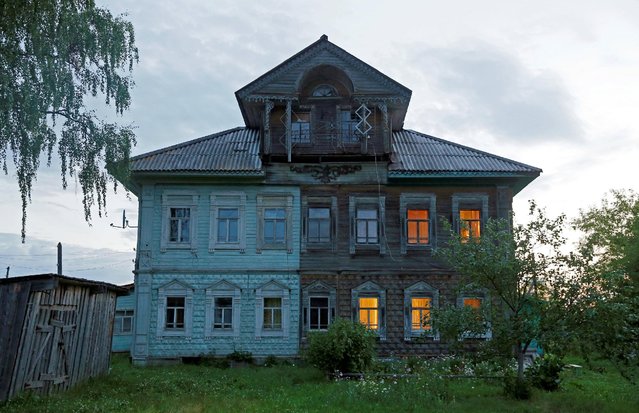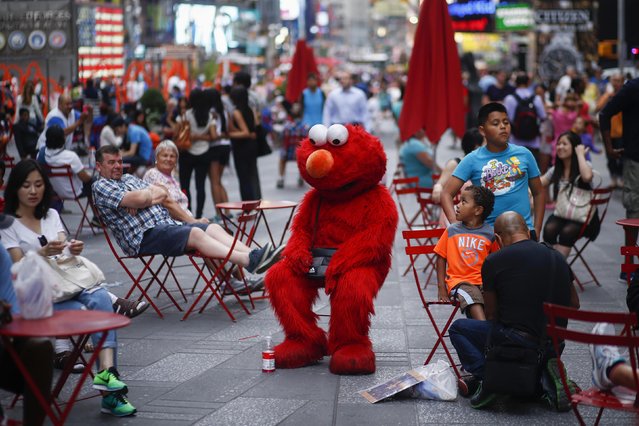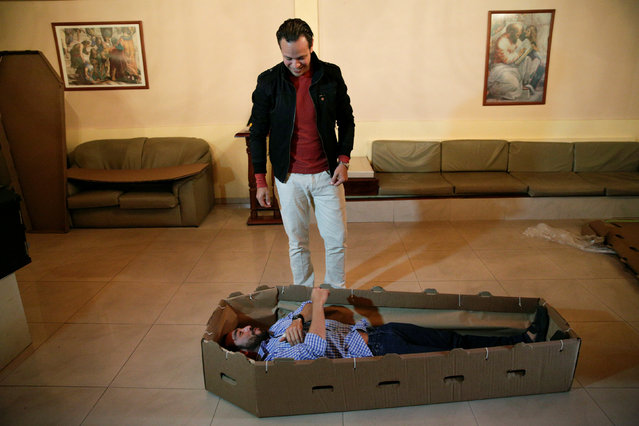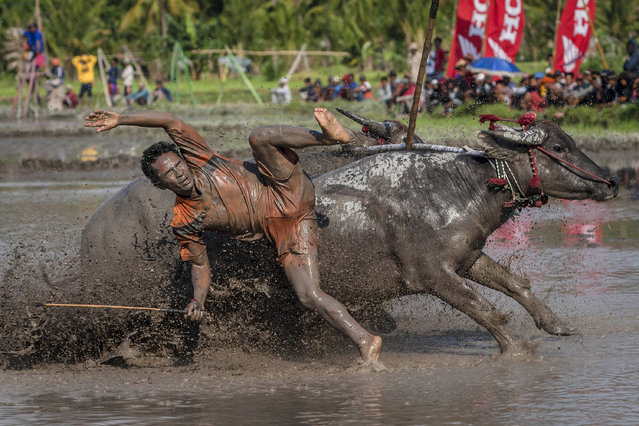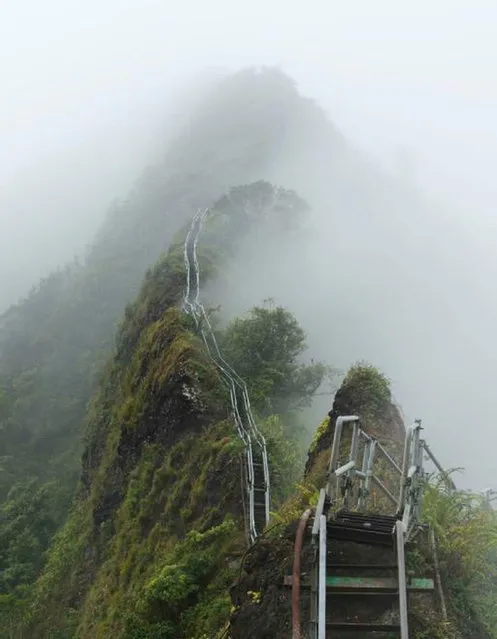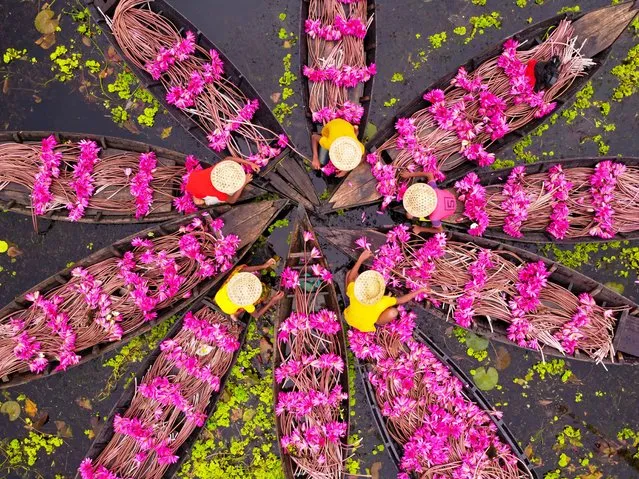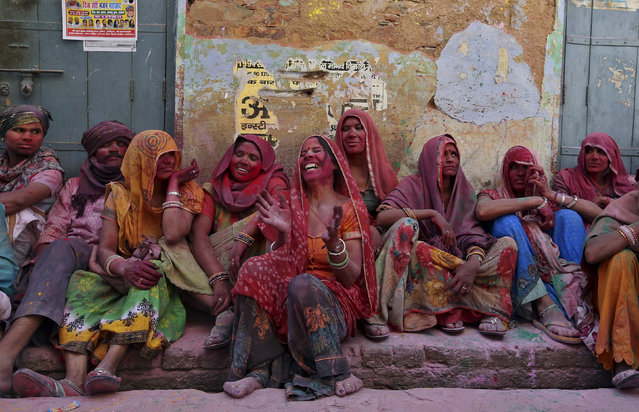
Hindu devotees laugh as they watch the religious festival of Lathmar Holi, where women beat the men with sticks, in the town of Barsana in the Uttar Pradesh region of India, March 17, 2016. During Lathmar Holi the women of Barsana beat the men from Nandgaon, the hometown of Krishna, with wooden sticks in response to their teasing. (Photo by Cathal McNaughton/Reuters)
18 Mar 2016 11:35:00,post received
0 comments


